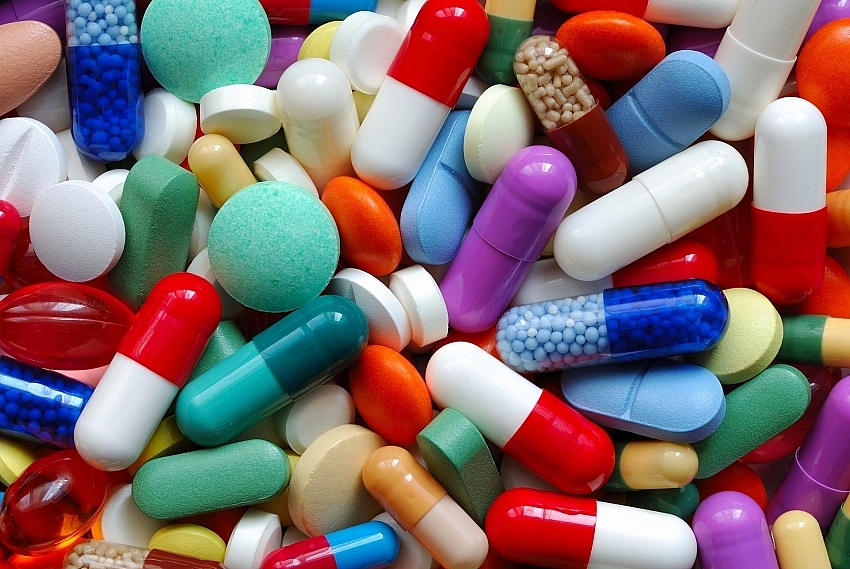Pharmaceutical groups yearn for end to VAT tangle
 |
| Illustrative image (Photo: internet) |
The General Department of Taxation (GDT) under the Ministry of Finance (MoF) at last week’s dialogue of the prime minister’s Advisory Council for Administrative Procedure Reform with the European business community and Whitebook 2020 launch said that it is revising Circular No.26/2015/TT-BTC dated 2015 providing guidance on VAT to facilitate medical device importers.
“The circular is amended towards removing the requirement to have import licenses or certification from the Ministry of Health (MoH) that products or goods are medical equipment. It will be aligned with Decree No.169/2018/ND-CP dated 2018, amending and supplementing certain provisions of Decree No.36/2016/ND-CP on management of medical devices,” said a representative of the GDT.
Under decrees 36 and 169, goods or products which meet the requirements as specified in Article 2 and are classified into one of the four types by medical device classification organisations are considered medical equipment. After being granted circulation registration numbers, medical equipment traders have the right to import medical equipment without restriction on the number of times of import and quantity of items, and do not have to ask the MoH to grant import licenses or certify that such products or goods are medical equipment.
In spite of the GDT statement, members of the EuroCham Medical Devices and Diagnostics Sector Committee might have to wait for some time to enjoy the improvement as no timeline for the revision has been announced.
VAT for imported medical devices has been an unsolved issue for years. According to the MoH, it has sent documents to the MoF on several occasions, urging for a solution to help such medical device importers – however, no strong moves have been made so far. At this dialogue, VAT was once again raised amid the upcoming enforcement of the EU-Vietnam Free Trade Agreement, expected in August, urging Vietnam to make changes in prevailing rules, including taxes.
Representatives of the Sector Committee called upon the GDT and the General Department of Customs (GDC) to be consistent in implementing regulations on classification and certification of medical devices, following decrees 36 and 169.
“The GDT and GDC should apply a consistent rate of VAT for imported medical devices; issue a guiding document on applying VAT for imported medical devices as soon as possible; and provide a detailed timeline for amending Circular 26 as soon as possible,” said the representative.
Currently, importers of these equipment are paying a VAT rate of 10 per cent on items which are defined as medical under Decree 36 and should enjoy a 5 per cent VAT rate. The MoF’s customs authorities blamed this on having no basis for applying Decree 36 and guiding documents to apply the lower VAT rate to specialised medical devices and equipment. This is where the regulations have so far stalled. According to Article 1.8 of Circular 26, medical devices are entitled to a VAT rate of 5 per cent. Accordingly, medical equipment and devices and specialised medical supplies under MoH certification are entitled to this tax rate. Meanwhile, Decree 36 and Decree 169 abolished this requirement.
Up to now, the MoF’s customs authorities still take the basis of Circular 26 to require imported medical equipment to be certified by the MoH so that enterprises can enjoy the VAT rate of 5 per cent.
Regulatory inconsistencies have caused great difficulties for importers and public hospitals over the last few years.
Members of EuroCham’s Medical Devices and Diagnostics Sector Committee are said to be the largest victims of the problem, with notable brands including Abbott Diagnostics, B.Braun, Bayer, DKSH, GE Healthcare, Philips, Roche Diagnostics, Zuellig Pharma, and many others.
Driven by the growth of investment in medical devices averaging 18 per cent a year, the double-digit growth of the medical devices and diagnostics market, 90 per cent of which is made up of imports, has stimulated multinational companies to better serve the market through investments in a solid local network of partners, with several representative offices. It has also created opportunities for some multinationals to establish local production.
For instance, Siemens Healthineers, part of global industrial conglomerate Siemens, launched ACUSON Redwood at the fourth National Congress of Vietnam Society of Ultrasound for Medicine in the central city of Danang early this year.
This is a new ultrasound system built on the company’s new platform architecture and features advanced applications for greater clinical confidence, AI-powered tools for smart workflow, and shared cardiology features used by different hospital departments.
Elsewhere, Swiss-backed DKSH in March signed an exclusive agreement with Denmark-based Vetaphone to distribute their range of plasma surface treatment solutions in Malaysia, Singapore, and Vietnam.
What the stars mean:
★ Poor ★ ★ Promising ★★★ Good ★★★★ Very good ★★★★★ Exceptional
Themes: EVFTA & EVIPA
Related Contents
Latest News
More News
- PM orders investment model for North–South high-speed rail (December 22, 2025 | 17:43)
- First members of Danang International Finance Centre revealed (December 22, 2025 | 17:39)
- Securing capital and efficiency for Vietnam’s 2026-2030 growth ambitions (December 17, 2025 | 10:00)
- Driving double-digit growth through green and circular transformation in Vietnam (December 17, 2025 | 09:00)
- Vietnam bucking trend in the global M&A landscape (December 16, 2025 | 14:20)
- Vietnam’s green transition demands collective financial action (December 15, 2025 | 12:00)
- VIR workshop highlights capital and policy for sustainable development (December 15, 2025 | 11:00)
- National Assembly approves pilot mechanisms to accelerate major projects in Hanoi (December 12, 2025 | 11:29)
- Vietnam eases policy approval requirements, simplifies foreign and outbound investments (December 11, 2025 | 17:53)
- Unpacking new momentum in Vietnam’s M&A market (December 10, 2025 | 09:59)

 Tag:
Tag:





















 Mobile Version
Mobile Version